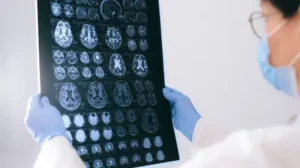Microstructural Injury to the Optic Nerve with Vigabatrin Treatment in West Syndrome: A DTI Study
West syndrome, also known as infantile epileptic spasms syndrome, is a rare and severe form of epilepsy that typically begins in infancy, usually within the first year of life. It is characterized by a triad of symptoms: infantile spasms, hypsarrhythmia on EEG, and developmental delay or regression.
Vigabatrin is a widely used antiseizure medication for the treatment of West syndrome. However, vigabatrin has been associated with adverse side effects on the visual system, affecting approximately one-third of children taking the antiseizure medication. These effects—commonly referred to as vigabatrin-induced retinopathy—are characterized by changes in the visual system that can lead to functional deficits. However, evaluating vigabatrin-related visual impairment in children remains a clinical challenge.
In older children with sufficient cognitive ability, standard visual field testing can be performed. In younger children, detecting vigabatrin-induced retinopathy remains difficult due to developmental constraints and the lack of effective testing methods.
Seeing the need for an alternative detection strategy in young children, researchers recently evaluated optic nerve injury associated with vigabatrin treatment in children with West syndrome using an advanced imaging method called diffusion tensor imaging (DTI). This type of magnetic resonance imaging (MRI) maps the diffusion of water molecules in the brain. By measuring the direction and magnitude of water diffusion, DTI provides insights into the structural organization of the neural connections in the brain, specifically, the white matter tracts that connect different brain regions, such as the optic nerves.
In a study of 35 children, imaging measurements obtained for the optic nerves were significantly decreased in a subset of children on vigabatrin compared to children on other antiseizure medications, suggesting microstructural alterations in this subset of children. The study found that vigabatrin discontinuation in these children partially reversed changes in the optic nerves.
Overall, these findings underscore the importance of close monitoring of optic nerve integrity during vigabatrin therapy using advanced imaging techniques. The reversibility of optic nerve changes supports the continued use of vigabatrin in managing epilepsy in patients with West syndrome provided that regular imaging surveillance is performed.






